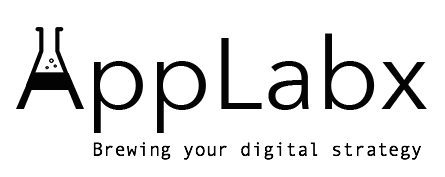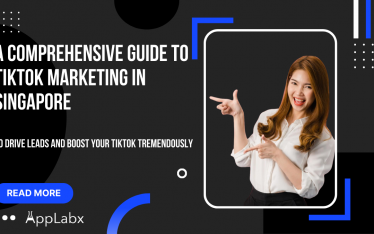SEO is an important cog in your online business machinery
“Organizations who can’t match up in content creation and promotion may find themselves losing out to content marketers who learn the basics of SEO.” ~ Rand Fishkin, CEO/Co-Founder, Moz
Summary of article
- Search Engine Optimisation (SEO) is used to improve the rank position of a website on the search engine’ organic result pages.
- Higher rank position brings about greater visibility and higher CTRs:
- 33% of organic clicks happen on Page One.
- Within Page One, the top 5 rank positions account for 60% and the 6 to 10 results account for only 3.73%.
- Page Two and Three get only 59% of the clicks.
- The SEO process is usually broken down into two parts: on-page optimization and off-page optimization.
- On-page optimization consists of good content writing, meticulous meta-tagging, and proper internal linking of webpages.
- Off-page optimization comprises backlinking from reputable websites and community building through social media sites.
- Doing a keyword research is usually the first step in the SEO strategy.
Introduction
SEO, which is known as Search Engine Optimisation, is the art and science of publishing that digital marketing professionals use to bring online traffic to websites. According to Wikipedia, “Search Engine Optimisation” is the process of affecting the visibility of a website or a webpage in a search engine’ unpaid results – often referred to as “natural”, “organic” or “earned” results”.[1] As this is an unpaid rather than a paid digital channel (Google Adwords), generally, SEO can contribute to the success of your business by generating targeted traffic to your website at a relatively cheap cost.
How SEO works
How SEO works is it enables search engines to better crawl and index your website using their algorithms (for more information on how search works, please refer to the “Crawling and Indexing” article on Google). Through a myriad of SEO strategies and techniques, SEO professionals tweak different parts of your website and as a result, it gives signals to the crawlers that your website is more relevant to what a typical searcher would want to look for than another website selling similar services/products as your business. The better and more SEO steps you execute, the higher the search engine’s algorithm will score your website. This improves the overall performance of your website and translates to a more prominent rank position on the result pages. Generally speaking, SEO is a broad process that can be split in two parts:
- On-page optimization such as inputting the keywords into your meta-tags, re-directing the page errors, and writing relevant content with your chosen keywords in it; and
- Off-page optimization such as building backlinks on reputable external websites and creating communities on social media sites.
With these done, all that remains is to wait for the SEO work to translate to results, usually within the next few months or so.
Benefits of SEO
When your website is not available on the search engines, due to poor internal linkages of your webpages or the lack of a sitemap among others (don’t hesitate to contact us for help in internal linkages and creation of a sitemap), business opportunities are lost. Concomitantly, money is lost. If someone searches for something closely related to your business, you would want to make sure your website comes up prominently in the search results. The more you focus on SEO, the higher your site will appear in the search results, the better your business does in generating leads, and eventually this leads to higher sales and better profitability.
For example, if you have a website that sells children’s clothes, you would want to ensure that when somebody searches online for something related to the products you sell, the search engines’ results will display your website visibly, or at the very least, more prominent than that of your closest competitors. Else, what could have been your business have now been involuntarily presented on a silver platter to your rivals.
Philip Petrescu published a thorough study on the Moz blog investigating on the click-through rate (CTR) of different ranking positions. The CTR data were taken from Google Webmaster Tools (now Google Search Console), in which the latter defined CTR as “the click count divided by the impression count”. The result of his study is as shown below.

Chart 1: Different CTR for different rank positions
As written in the paper, “On average, 71.33% of searches result in a page one organic click. Page two and three get only 5.59% of the clicks. On the first page alone, the first 5 results account for 67.60% of all the clicks and the results from 6 to 10 account for only 3.73%.” This demonstrates a huge benefit a first page or better still, a first rank position can bring about to your website – higher CTR, and quite possibly, higher conversion rates and sales figures.
Search Engine Optimization is therefore an essential cog in your online business machinery. By improving your ranking on the search engines, it puts your business closer to prospective customers, which more often than not, brings a host of benefits as mentioned above: an increase in CTR, conversion, sales and profitability.
However, you must be cognizant of the existence of unlawful techniques, also known as Black hat SEO techniques, that can be used to build your SEO (for more information, see Search Engine Watch). Google and other search engines have tools that can detect that and they will penalize you by lowering your website ranking, or in some cases, banning your website totally.
By now you are probably aware of what is SEO and its main benefit to push your website up the search engine result pages.
The next question is how to get started?
Execution of SEO
First and foremost, a typical SEO campaign would begin with a keyword research to find out the keywords that are predominant in your industry or niche. Knowing what keywords people search for when they are looking for a service/product helps you to be aware of what keywords to write on your webpages and in your meta-tags. If you provide services and/or sell products, the keyword research would tell you that you shouldn’t use any random keyword as a primary keyword because most people search for targeted keyword, not random keywords. Joost, founder and CEO of Yoast, once said, “without proper keyword research, all other things are basically useless”.
While one may initially be put off by the effort and time needed for the keyword research phase, thankfully, there is a plethora of online tools that can make the process much less arduous. For starters, the Google Keyword Planner is a simple and useful tool that usually serves as a primary step to begin researching on the keywords. More interestingly, the Keyword Planner churns out several metrics that can allow you to tease out certain business characteristics of your customers and competitors:
- The average monthly searches for the keywords show you the demand for a particular service/product relatively to others.
- The volume trend over the selected time period can reveal whether there is a seasonality factor for your service/product.
- The competition gives a sense of how many websites are using that keyword for their businesses.
Using our example of an online retailer selling children’s clothes in Singapore, we imputed the keyword “children clothes” in the Keyword Planner and modified the target market to “Singapore” and time period from Feb 2014 to Jan 2016. The results are as shown below.

Chart 2: Time graph of “children clothes” from Mar 2014 to Feb 2016


Chart 3: Keyword Planner results
Let’s analyze this set of data to distill some interesting business insights according to the three factors as discussed above.
1) Seasonality: A look at the time graph (Chart 2) reveals that the keyword search for “children clothes” follows an upward trend during the later months of the year, reaching a peak in the month of January before taking a dip in the month of February. One reason could be due to the Chinese New Year festival, which falls on the February 19 in 2015 and February 8 in 2016. Parents may search for, and spend most of their disposable income, to buy clothes online for their children in the prior months before the festival (The Chinese tradition believes in wearing new clothes during this festival). By having this piece of information, the online retailer is able to plan when to dish out her store-wide promotions, hire or reduce part-time labor, and increase or shrink her inventory size.
2) Demand: A look at Chart 3 under “Ave. monthly searches” show the number of searches potential customers made on each different keyword during the selected time period. If the online retailer wishes to focus on a particular niche for her products, she will do better by selling baby clothes rather than kids clothes, all else being equal, due to the higher search volume for “baby clothes” than “kids clothes”.
3) Competition: Keywords such as “baby clothes” and “kids clothes” are competitive and should be avoided as much as possible. These keywords are also known as short-tail keywords in the SEO world having qualities of being broad and are usually competitive. (We will be doing a blog post on the characteristics of keywords, so do subscribe to our free newsletter and stay tuned).
All in all, these are some useful business insights that can be derived from using the basic Google Keyword Planner. Of course, the general rule of thumb is to choose keywords that are highly searched for and not competitive (the Keyword Effectiveness Index is a metric that takes into account the tradeoff between the two parameters).
One word of caution before we conclude this blog post: it’s better not to rely solely on just this data alone but to test your hypotheses with other data sources or to increase the sample size, i.e., choose a longer time period to see the seasonality factor better, so that clearer and stronger insights can be obtained. The rest of the metrics are more pertinent if you are planning to execute a Google Adwords campaign.
Other than the Google Keyword Planner, there are many more free online tools that you can use during your keyword research. Do subscribe to our digital “cookbook”, which is absolutely free, to obtain more free tips for SEO and recipes for free SEO tools to power up your website’s ranking on the search engine result pages.
Sources:
Ault, Don. (2013). “Web Optimization – What is SEO?”. Retrieved from http://EzineArticles.com/7509226 on 10th march 2016
Verrier, Elisee M. (2008). “What does SEO stand for?”. Retrieved from http://EzineArticles.com/1608773 on 10th march 2016
Wikipedia. (2016). “Search engine optimisation”. Retrieved from https://en.wikipedia.org/wiki/Search_engine_optimization on 10th March 2016
Petrescu, Philip. (2014). “Google Organic Click-Through Rates in 2014”. Retrieved from https://moz.com/blog/google-organic-click-through-rates-in-2014 on 10th March 2016
Van de Rakt, Marieke. (2016). “Why focus on long tail keywords?”. Retrieved from https://yoast.com/focus-on-long-tail-keywords/ on 10th March 2016



